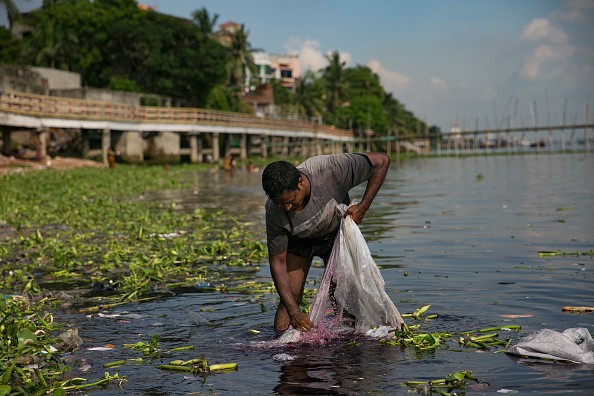Microplastic pollution has been a concern for environmentalists because of its impact on the oceans and aquatic animals. The unstoppable use of plastic has been attributed to the deaths of many animals in the sea.

In new research, researchers found that microplastics or tiny plastics were detected in Dhaka's rivers and lakes.
The study emphasized the environmental risks that microplastic pollution could impact aquatic animals, the life of the body of water, and humans.
The Journal of Hazardous Materials Advances published the research in October. It is also available to read on Phys.org's website.
According to the National Geographic, an article explained that microplastics require hundreds of years before it decomposes.
The abundance of microplastics in environments or ecosystems could leave considerable damage, affecting the animals and their habitats.
Moreover, the report added that microplastics were detected in marine organisms, including whales, plankton, seafood, and human drinking water. It could threaten the lives of animals.
In a different report, the National Geographic showed the increasing production of plastics worldwide.
Plastic production exponentially increased from 2.3 million in 1950 to 448 million in 2015.
What is worrying is that the production could double in by 2050.
As a result, environmentalists and the United Nations (UN) have encouraged countries to reduce their plastic consumption or production.
Moreover, the report added that eight million tons of waste plastics pollute the ocean.
Impact on Dhaka's lakes and Rivers
According to the study, the researchers found Dhaka's rivers and lakes recorded 36,000 microplastics per cubic based on the samples collected from the said river.
Meanwhile, the report added they discovered 13 607 microplastics per kilogram (dry of weight).
The study's co-author, Shafi Mohammad Tareq, explained that the study showed a high amount of microplastics in lakes and urban rivers.
Tareq is also a professor at Jahangirnagar University, Dhaka.
The article published in Phys.org said that the microplastics found in the area could come from bags, cups, tires, textiles, or beauty to personal products.
The researchers identified the plastics from the samples, which include nylon, polypropylene, polystyrene, and polyethylene.
The damaging impact of plastics on biodiversity and ecosystems is a concern that could unfold due to the excessive consumption of plastics in many countries.
Also Read : Researchers Gather Thousand Marine Micro-organisms Samples to Understand Ocean Plankton and Pollution
Meanwhile, the researchers noted the poor waste management in the area that developed into microplastic pollution affecting lakes and rivers.
The study's co-author recommended the importance of plastic waste management and legal enforcement.
In this way, the implementation could be successful and prevent microplastic pollution.
On the other hand, the study's corresponding author, Fahmida Parvin, explained that the sampling showed ecological risks in Gulshan Lakes, Tongji Khal, and Buriganganga River areas.
It can put at risk freshwater biota in the area.
Biodegradable material
In the previous report, researchers developed a biodegradable material in seawater, helping to address the worsening problem of plastic pollution.
The researchers aimed to replace plastics with something biodegradable in seawater.
Unlike plastics taking hundreds of years to decompose, biodegradable material can degrade in water in less than or within four weeks.
For more similar, don't forget to follow Nature World News.
© 2025 NatureWorldNews.com All rights reserved. Do not reproduce without permission.





